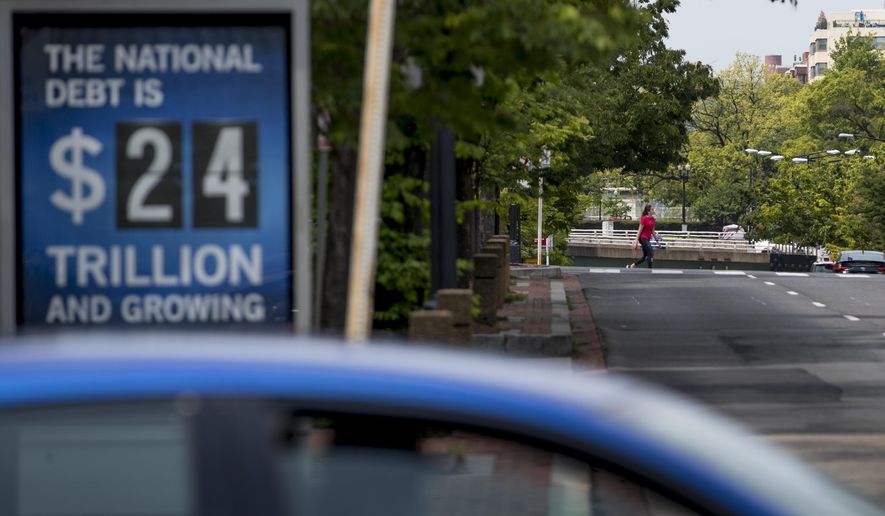Federal debt is nearing “unsustainable” levels, but low interest rates have created a window of opportunity for policymakers to rein it in, the Congressional Budget Office said Monday, delivering a mixed forecast for the government’s long-term outlook.
Federal spending, currently 21% of gross domestic product, will rise to 31% by 2050, with most of that increase coming from interest payments on the rising debt, said CBO Director Phillip L. Swagel. Federal revenue, meanwhile, stood at just 16% of GDP last year and will reach only 19% by 2050.
The gap between the spending and revenue numbers illustrates the problem.
“The fiscal path over the coming decades is unsustainable,” Mr. Swagel said in a stark statement describing CBO’s findings.
Federal debt held by the public will reach 98% of gross domestic product this year and will cross the 100% threshold next year.
It will reach a record 107% in 2023, and by 2050 — the end of CBO’s budget window — it will be a staggering 195% of GDP.
Both Republicans and Democrats on Capitol Hill said they heard the warning, though solutions remain elusive.
“Congress has an obligation to the American people to do its job. We must get back to regular order and correct our current course,” said Rep. Steve Womack of Arkansas, the top Republican on the House Budget Committee.
Maya MacGuineas, president of the Committee for a Responsible Federal Budget, said the fiscal situation could even be worse than the CBO projects, because the analysts were required to assume that spending remains on its current trajectory and that some of the 2017 tax cuts will expire.
Congress’s penchant for extending tax cuts and approving new spending will hasten a debt disaster.
“Unfortunately, our governing process is so fractured that Congress is struggling to even avoid a government shutdown, let alone address the rising long-term debt,” Ms. MacGuineas said. “And neither presidential candidate has offered up a plan to deal with our long-term finances.”
The coronavirus pandemic is a significant cause of the increase in debt, CBO said. But the problems run much deeper than virus spending.
Four of the government’s trust funds are expected to be exhausted by 2031, including both Social Security funds, Medicare’s hospital insurance fund and the Highway Trust Fund.
Even treading water, much less making headway on the debt, will require significant sacrifices.
Mr. Swagel said it will mean sustained tax increases, spending cuts or a combination of the two, of nearly 3% of GDP a year.
If that began in 2025, it would add $2,200 that year to the average American’s tax bill or cost that much in lower federal spending.
Waiting longer to begin means even deeper spending cuts or tax increases would be needed.
It’s not likely the economy can grow quickly enough to erase the need for spending cuts or tax increases, Mr. Swagel said.
Some economists have argued that the 100% debt mark is a clear danger sign for major world economies. CBO didn’t subscribe to that, but said there is a line out there.
“There is no set tipping point at which a fiscal crisis becomes likely or imminent, nor is there an identifiable point at which interest costs as a percentage of GDP become unsustainable. But as the debt grows, the risks become greater,” Mr. Swagel said.
Among the dangers are the more the government owes to foreign creditors, the less income the U.S. has. And the worse the budget picture, the less room the government has to maneuver in future fiscal crises, CBO said.
• Stephen Dinan can be reached at sdinan@washingtontimes.com.




Please read our comment policy before commenting.